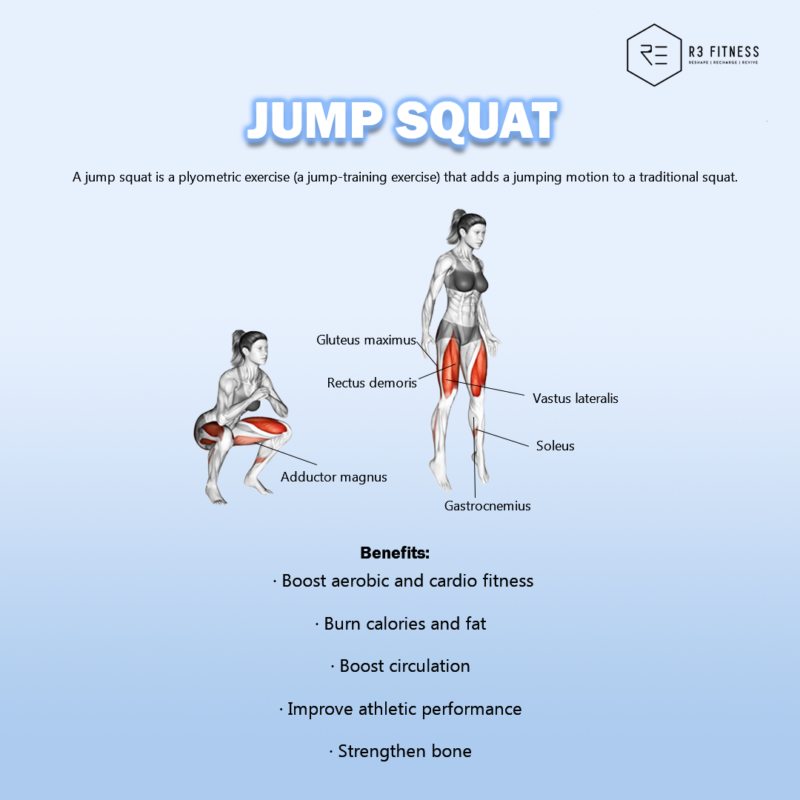Knowledge about workouts and nutritions, Tips for workout
5 Benefits of Jump Squat
5 Benefits of Jump Squat
What is jump squat?
A jump squat is a plyometric exercise (a type of jump training exercise) that adds jumps to the traditional squat. With proper perform, it can be a great way to burn calories and improve strength in both upper and lower body. Keep reading to learn more about the jump squat!
What muscles do squats work?
The obvious target muscles are in the lower body, but in order to perform this compound exercise properly, several muscles above the waist are required.
The lower muscles target squat include:
- gluteus maximus, minimus, and medius
- quadriceps
- hamstrings
- adductor
- hip flexors
- calves
In addition to the lower body, squats also target your core muscles. These muscles include the rectus abdominis, obliques, transverse abdominis, and erector spinae.

5 Benefits of Jump Squat
Here’s a summary and key benefits of jump squats, let’s rock the squat!
- Boost aerobic and cardio fitness
- Burn calories and fat
- Boost circulation
- Improve athletic performance
- Strengthen bone
Boost aerobic and cardio fitness
Based on the results of the study, the researchers concluded that jump squat training improved aerobic and aerobic performance.
Burn calories and fat
Calorie burn usually occurs during aerobic exercise such as running or cycling. But high-intensity compound exercises like squats can also reduce calories.
Boost circulation
Rather than twisting the arteries and veins into the legs, jump squats increase circulation by bringing the heart closer to the level of the feet.

Improve athletic performance
If you play a sport, adding squats to your workout can help you improve strength and speed, which in turn can help improve athletic performance.
Strengthen bone
Having strong bones can make everyday movements like rolling over, bending and even standing easier. Stronger bones can improve your balance, ease your lower back pain, and make it easier to maintain good posture.
Looking for professional personal trainer? Get your free trial at: https://www.r3fitness.com.my/personaltrainer/

